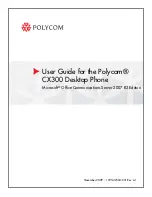
77
• Period to sync Calendar
: When enabled, events from your
account are synchronized with your device’s Calendar.
• Security options
: Set various security options for the account.
• In case of Sync Conflict
: Set whether to update the server or
your tablet if there is a conflict of information between them.
• Auto resend times
: Set the number of auto send times.
Options are: No limit or 1, 3, 5, or 10 times.
Notification settings
• Email notifications
: When enabled, the New Email icon
appears in the Status Bar when a new email arrives.
• Select ringtone
: Choose a ringtone for email notifications for
this account.
• Vibrate
: When enabled, email notifications for this accounts
are accompanied by vibration.
Server settings
• Exchange server settings
: Configure incoming server
settings.
– or –
Incoming settings
: Configure incoming server settings. For more
information, refer to
“Incoming Server Settings”
on
page 77.
• Outgoing settings
: Configure outgoing server settings. For
more information, refer to
“Outgoing Server Settings”
on
page 78.
• Sync Email
: When enabled, email from your account is
synchronized with your device’s email.
• Sync Contacts
: When enabled, contacts from your account
are synchronized with your device’s Contacts.
• Sync Calendar
: When enabled, events from your account are
synchronized with your device’s Calendar.
• Sync Task
: When enabled, tasks from your account are
synchronized with your device’s tasks.
Incoming Server Settings
Your account’s exchange or incoming server settings are
different, depending on the kind of email service for the
account: POP3, IMAP, or Exchange ActiveSync.
•
Domain\ user name
: If your Exchange ActiveSync server requires
that you specify a domain, enter it before the backslash.
Otherwise, just enter your username (the part before
@emailprovider.com in your email address) after the backslash.
The backslash is optional when only entering your username. The
Email app enters the correct syntax for domains and usernames
when communicating with the server.
















































